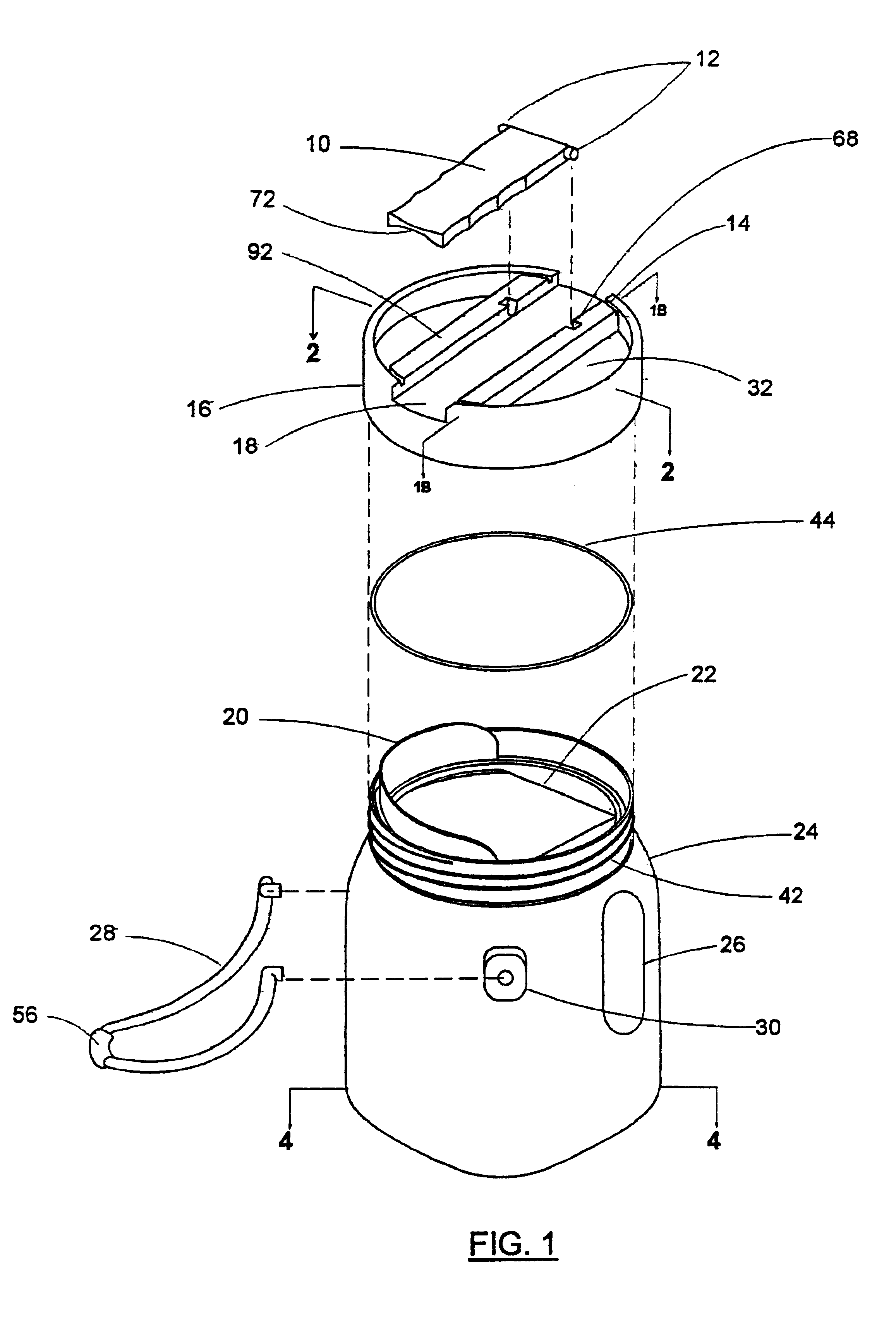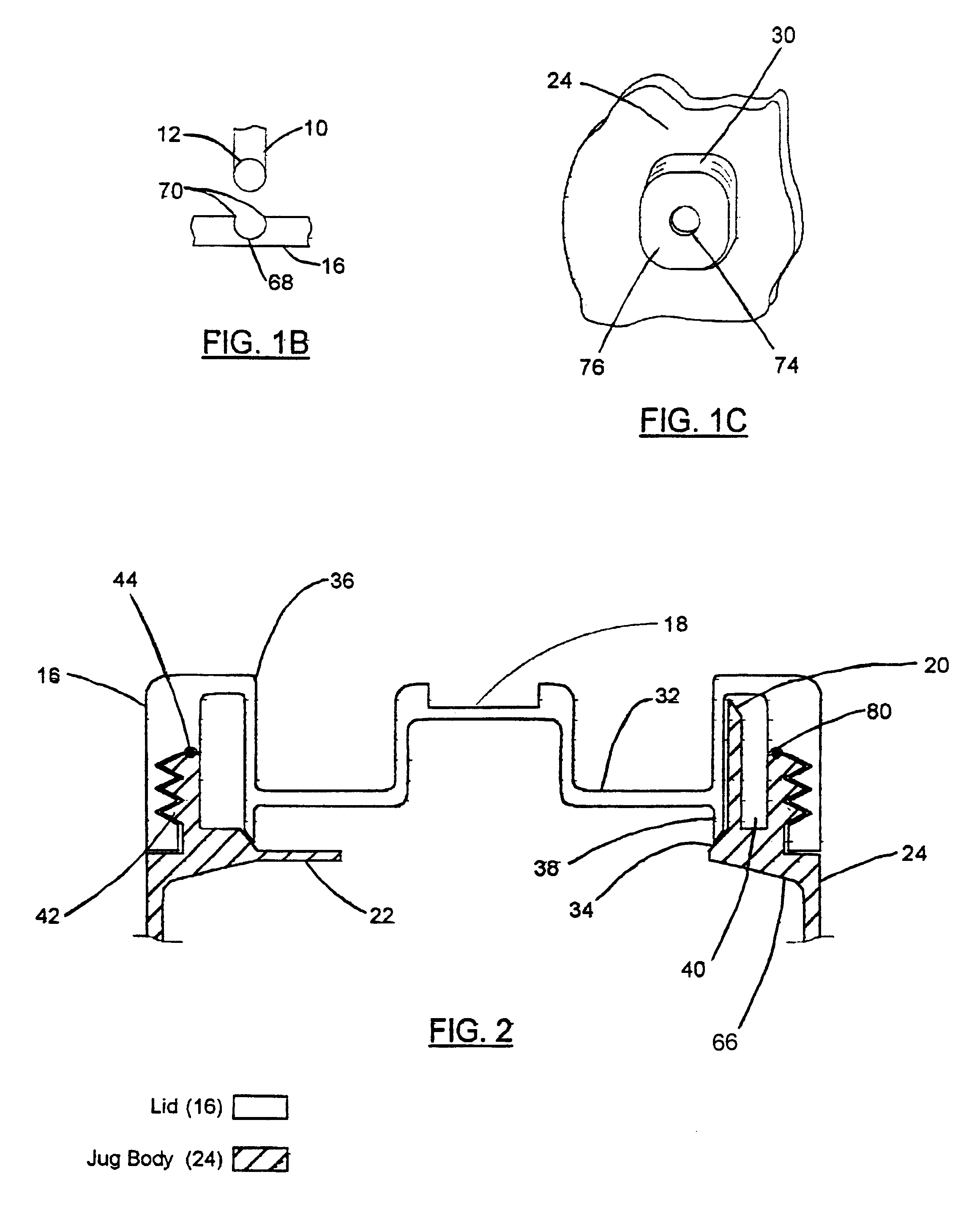Storage and dispensing container for viscous fluids, paints and the like, and method of minimizing dripping
a technology of viscous fluid and storage container, applied in the field of paint containers, can solve the problems of lack of locking mechanism, large contents spillage, many operational drawbacks, etc., and achieve the effect of minimizing paint spillag
- Summary
- Abstract
- Description
- Claims
- Application Information
AI Technical Summary
Benefits of technology
Problems solved by technology
Method used
Image
Examples
Embodiment Construction
A preferred embodiment of the present invention is illustrated in FIG. 1 in exploded part format. The container has a jug-like body 24, preferably of one-piece plastic construction. The jug body may be blow-molded and made of high-density polyethylene (HDPE), and can be made resistant to oil-based materials and the like by treating the interior with a process such as fluorination. It has a plastic screw-type lid 16, a flip handle 10 with two cylindrical, mounting hinge pins 12 protruding from its sides on one end. Both the lid and flip handle can be made of commonly available strong, plastic materials such as HDPE, ABS or PVC. Both can be injection molded or fabricated from stock. The preferred embodiment of the container also has a rigid swing handle 28 externally mounted onto the body at its ends, and an optional swing handle grasp pad 56 which fits around the middle of the swing handle. The swing handle is made of strong, corrosion-resistant metal such as aluminum or stainless st...
PUM
 Login to View More
Login to View More Abstract
Description
Claims
Application Information
 Login to View More
Login to View More - R&D
- Intellectual Property
- Life Sciences
- Materials
- Tech Scout
- Unparalleled Data Quality
- Higher Quality Content
- 60% Fewer Hallucinations
Browse by: Latest US Patents, China's latest patents, Technical Efficacy Thesaurus, Application Domain, Technology Topic, Popular Technical Reports.
© 2025 PatSnap. All rights reserved.Legal|Privacy policy|Modern Slavery Act Transparency Statement|Sitemap|About US| Contact US: help@patsnap.com



